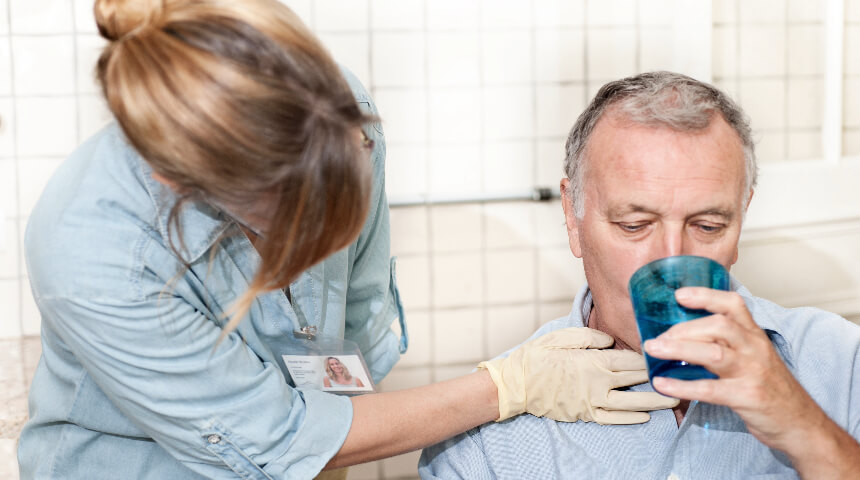If you don’t have occasional bouts with lower back pain, odds are that you know someone who does -- with an estimated 80 percent of us experiencing lower back pain at some point in our lives.
The pain can be caused by a wide range of factors, though the most common culprits are soft tissue and neurological injuries. Every day, life presents us with new ways to injure our backs. Many injuries can be caused by poor posture, improper lifting, repetitive movements or traumatic events.
Among the treatment options for these injuries is physical therapy, where you’ll work with a therapist to develop a plan of strengthening and stretching exercises to relieve the pain and keep it from coming back.
If you find yourself in a physical therapist’s office – either by choice or because your doctor suggested it – expect to tell your story. The goal is to take a close look at your life’s activities to figure out the cause of your pain. Was there a change in your daily routine? Do you have new job duties? Did you start a different exercise routine? Did you step in a hole or lift something heavy?
If your story suggests that physical therapy is the right option, your therapist will work with you to develop a program of exercises and stretches to target the trouble area. You should not attempt any of these stretches or exercises without first consulting your therapist.
Stretches for Lower Back Pain
The goal of stretching is to improve your mobility and protect your lumbar spine. If, for example, your hips lack adequate flexibility, it forces your spine to rotate to compensate, creating the potential for pain and further problems.
Among the stretches your therapist may recommend:
Piriformis Stretch
Start by laying on your back with both knees bent and feet flat on the floor. Then put your right ankle at the base of your left thigh, near the knee. Stretch the muscle by putting both hands behind your left thigh and pulling toward your chest. Hold for 30 seconds. Reverse the position for the opposite side.
Seated Spinal Twist
Sit on the floor with both legs extended. Bend your left knee and put your foot on the outside of the right thigh. Then put your right arm on the outside of your left thigh, while keeping your left hand behind you on the ground for support. Gently rotate your spine to the left and hold the pose for a minute. Reverse the position for the opposite side.
Pelvic Tilt
Lay on the ground on your back, with both knees bent and your feet flat on the floor. Tighten your abdominal muscles and press your back to the ground. Breathing normally, hold the position for 10 seconds. Do three sets of five repetitions.
Knee-to-Chest Stretch
Lie on your back, with both knees bent and your feet flat on the ground. Keep your left knee bent or extended straight out. Then use your hands – clasped behind the thigh or at the top of the shinbone – to bring your right knee to your chest. Relax and hold the pose for 30 seconds. Reverse the position for the opposite side.
Exercises for Lower Back Pain
Strengthening exercises aim to build or reinforce both large and small muscles that can affect your spine’s movement and stability. Among the exercises that might be recommended by your therapist:
Bridges
Lay on the ground with your feet flat on the floor, hip-width apart. Put your hands at your side and press your feet into the ground and lift your buttocks off the ground until your body is in a straight line. Keep your shoulders on the floor and hold for 15 seconds. Do three sets of 15 repetitions, with brief rests between sets.
Drawing In
Lay on the ground with your feet flat on the floor, hip-width apart. With your hands relaxed at your sides, take a deep breath. Then exhale and pull your belly button in toward your spine, using your abdominal muscles and without tilting your hips. Hold for 5 seconds. Do five repetitions.
Lateral Leg Raises
Lie on your side, with the lower leg slightly bent. Engage your core muscles by drawing your belly button in toward your spine. Then raise your top leg, without moving the rest of your body and hold for 2 seconds. Do three sets of 10 repetitions on each side.
Supermans
Line on the floor on your stomach and extend your arms in front – like Superman in flight. Then raise your hands and feet about 6 inches off the ground, or until you feel contraction in your lower back. Engage your core muscles by drawing your belly button in toward your spine. Hold the position for 2 seconds and repeat 10 times. To avoid neck strain, look at the ground during the exercise.
Getting the Most Out of Your Physical Therapy
As you approach therapy, one of the most important things you can do is develop a positive mindset. You need to believe that you aren’t broken and that you will get better. It’s hard to underestimate the mental and psychological component of your healing process.
You also need to commit to your exercises, which means listening to your therapist and doing your homework. The general nature of physical therapy is that you’ll probably get two hours a week in the office with your therapist. That’s not enough for effective long-term results. The people who do the best are those who dedicate themselves to the home exercise program developed by their therapist.
And one final note of caution: When you start to feel better, it can be tempting to jump back into an active lifestyle with exercise and athletics. Doing too much, too soon can result in a setback. Talk with your therapist or doctor before ramping up your activities.
Choose to Stay in Touch
Sign up to receive the latest health news and trends, wellness & prevention tips, and much more from Orlando Health.
Sign Up










